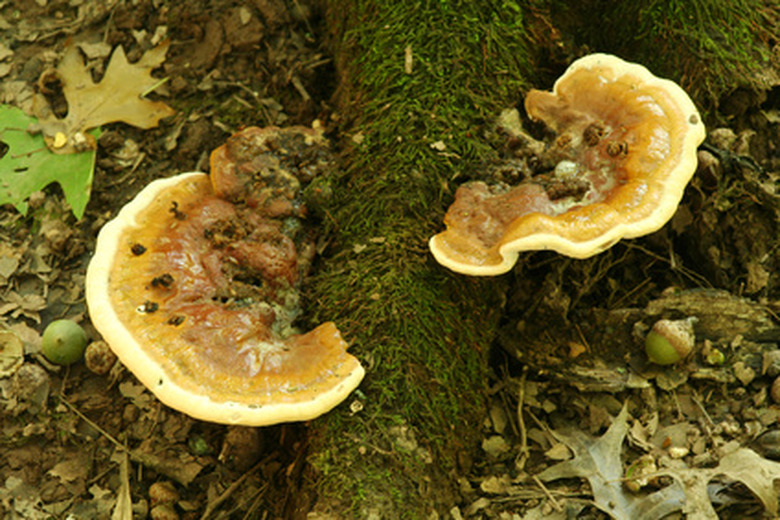Treatment For Ganoderma Root Rot
Ganoderma is a genus of wood-rotting fungi that plague trees in many regions of North America. Citrus orchards in Florida, park oaks in North Carolina and aspen groves in the Southwest all can exhibit the characteristic semicircular "conk" developing at the base of the trunk. Infestation can weaken the tree to the point of breakage before it dies, potentially damaging buildings and other nearby structures in the process.
Species
Species that can cause Ganoderma root rot (Ganoderma wood rot) are G. lucidum (also known as G. sessillis), G. applanatum and G. brownii.
Host Trees and Geographical Distribution
In northern states, visible signs of G. lucidum appear in late summer; they show up only rarely on forest trees but commonly affect maples and other trees in urban environments. G. lucidum has also been identified invading healthy citrus wood in Florida and "Marrs" early orange trees grafted onto sour orange rootstock in south Texas. G. brownii also preys on citrus trees but has been found doing so only in California. G. applanatum has been observed to infect aspen stands throughout the Southwest.
- Ganoderma is a genus of wood-rotting fungi that plague trees in many regions of North America.
- G. lucidum has also been identified invading healthy citrus wood in Florida and "Marrs" early orange trees grafted onto sour orange rootstock in south Texas.
Moist regions with deep soils are the most hospitable to Ganoderma fungus species.
Life Cycle of Ganoderma Fungi
Different Ganoderma species have different behavioral habits. Some feed harmlessly on dead matter, while others classified as "wound pathogens" invade and kill the sapwood of living trees.
Ganoderma fungi reproduce by airborne spores. They can also spread from infected roots to healthy ones during the process of root grafting. Upon infecting main or lateral roots, Ganoderma species develop a mycelium, which builds into a whitish mat under the bark. This mat later turns brown. The mycelium then moves up the crown roots to the trunk to develop the ribbon-like structures called "rhizomorphs." From the rhizomorphs finally come the characteristic semicircular "conks" or fan-shaped brackets at or near the base of the tree. These are the fruiting bodies, which release millions of spores over the next five to six months.
- Moist regions with deep soils are the most hospitable to Ganoderma fungus species.
- The mycelium then moves up the crown roots to the trunk to develop the ribbon-like structures called "rhizomorphs."
Treating Infected Trees
Unfortunately, it's usually too late to stem the progress of Ganoderma root rot in a tree that has begun to show the conks and brackets that visibly signal infection. The fungus will have progressed too far for control by this time. Even before fruiting bodies become noticeable, the infected tree will often break or fall, demonstrating the fatal structural instability caused by the fungus. If you observe signs of Ganoderma root rot before a break has happened, you're better off removing the tree before it can fall and damage nearby structures.
Preventing Future Infection
Common practice is to remove all wood from the soil before planting new trees where previous Ganoderma infections occurred. This, though, can be very costly. A less expensive procedure many growers are finding effective is to shear Ganoderma-infected trees above the soil line, leaving the stump behind.
- Unfortunately, it's usually too late to stem the progress of Ganoderma root rot in a tree that has begun to show the conks and brackets that visibly signal infection.
- A less expensive procedure many growers are finding effective is to shear Ganoderma-infected trees above the soil line, leaving the stump behind.
